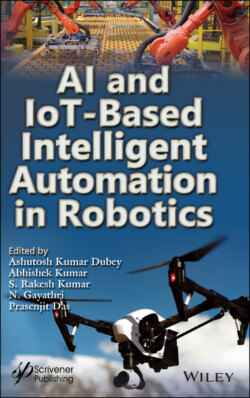Читать книгу AI and IoT-Based Intelligent Automation in Robotics - Группа авторов - Страница 19
1.5.2 Control
ОглавлениеThe mechanical structure of a robot must be controlled to perform errands. The control of a robot includes three distinct stages: perception, processing, and action (mechanical standards). Sensors give data about the earth or the robot itself (for example, the situation of its joints or its end effector). This data is then prepared to be stored or transmitted to ascertain the proper signals to the actuators (engines) which move the mechanical device.
The handling stage can run intricately. At a responsive level, it might decipher crude sensor data legitimately into actuator orders. A combinations of sensors may initially be utilized to gauge boundaries of intrigue (for example, the situation of the robot’s gripper) from boisterous sensor information. A prompt undertaking (for example, moving the gripper a specific way) is deduced from these evaluations. Procedures from the control hypothesis convert the assignment into orders that drive the actuators [10].
At longer time scales or with progressively modern undertakings, the robot may need to assemble and dissuade a “subjective” model. Subjective models attempt to speak to the robot, the world, and how they collaborate. For example, acknowledgment and PC vision can be utilized to follow objects; mapping strategies can be utilized to assemble maps of the world; lastly, movement arranging and other man-made consciousness procedures might be utilized to make sense of the proper behavior. For instance, an organizer may make sense of how to accomplish an undertaking without hitting deterrents, falling over, and so forth [11].
